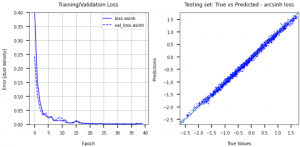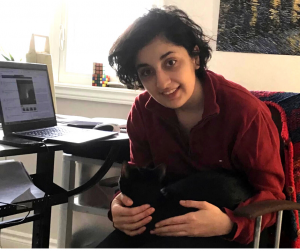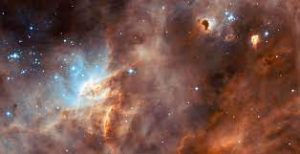Ava is a third-year undergrad at the University of Toronto. She’s studying computer science and physical sciences with a focus on astrophysics. Working with supervisor Josh Speagle, she is using machine learning to map out interstellar dust. Ava was born in Shiraz, Iran. Having lived in Toronto since 2015, she’s been residing in Ottawa since the pandemic.
What made you decide to participate in SURP?
The incredible opportunity to get involved in undergraduate research, learn from recognized scholars, and participate in the exciting quest for a potential new contribution to the scientific field! Through my studies so far, I’ve become amazed about the journey of exploration and understanding of the cosmos and I am fascinated that through observations, physical principles, mathematics, and some computing power what remarkable discoveries can be made about the unknowns of our universe. I wanted to be part of this journey. These all kindled my interest in participating in this program.
What is your favourite thing about SURP?
Working closely with Josh (Speagle) has been most enjoyable! The flexibility that he has given me in allowing me to explore areas that interest me most along with his enthusiasm and patience to guide me through the process has been wonderful.
Can you tell us about your research project?
I am exploring machine learning methods to generate smooth maps of the 3D distribution of dust from noisy measurements of integrated dust. I have so far been building and training neural network models on simulated dust density data and reproducing previous approaches to compare their performance in how well they predict dust densities (see graphic images, below). The next steps would be to explore measurement errors and to modify the neural network architectures to enforce physically motivated constraints that line with real astronomical data.
Can you explain how SURP has perhaps been different from your undergrad work?
SURP, as one of my first experiences in research is allowing me to get a taste of how a research career would be like. As someone new to this area I don’t have a lot to compare it to, it is a unique experience on its own!
What are your plans for the future?
I am still exploring my interests, but the exposure I had so far to research and my interest in my area of study has been a great motivator to continue towards graduate school towards an interdisciplinary field such as computational astrophysics.

A comparison of how well type of machine learning method known as a neural network is able to reproduce simulated observations of dust, with the real data shown on the left, the neural network values in the middle, and the difference between the two on the right. Courtesy: Josh Speagle.

An example of how the neural network’s predictions improve as it trains on more data over time. The left panel shows the “loss”, which measures how much the predictions and observations (“training data”) disagree over time. The right shows the accuracy of the final predictions compared for new observations (“testing data”). Courtesy: Josh Speagle.




